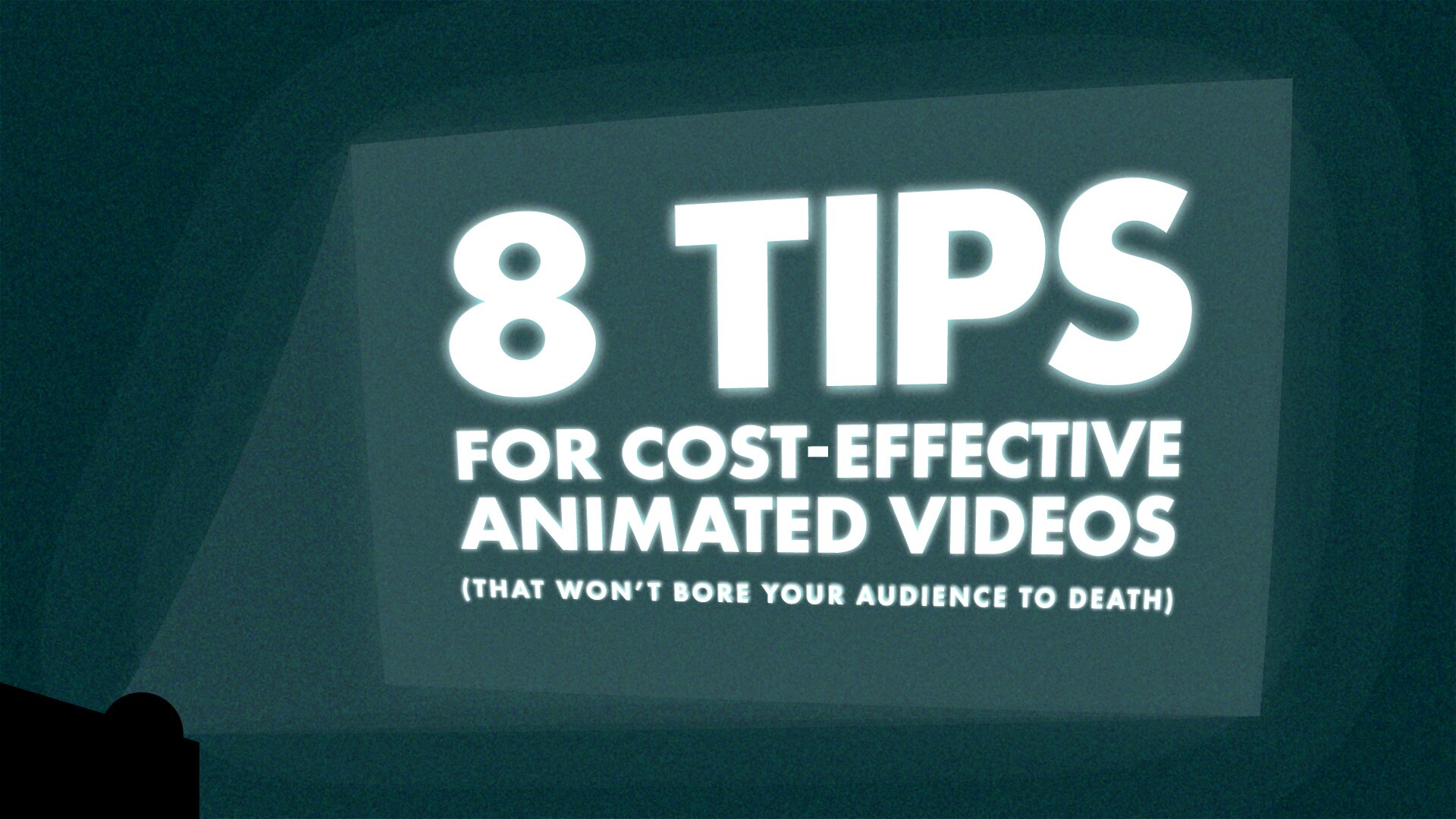
8 Tips for Cost-Effective Animated Videos (that won’t bore your audience to death)
Animated videos are a solid option for marketing to your audience in an engaging way, but along with increased engagement and audience attention comes increased cost. Thankfully, with these tips you can help mitigate that, and bring the cost of your videos down.
1. Bulk is key
By creating multiple videos with some common elements, you can substantially lower your production costs, and have a set of materials that play well together as a group.
Great examples of videos that make sense to produce in batches can include explainer videos for different audiences with similar topics, overview videos, and deeper dive videos that are on similar topics and can leverage content. Basically any set of videos that will have the similar graphics, and/or movement.
2. Keep it simple and short
The truth is, most stories could be told in 60 seconds by removing unneeded details. Yes, it would be great if you could hit your customer with all of the talking points, but don’t forget that the video you are making is only one step in the buyer’s journey. There is a direct correlation between video length and production time. If you cut a 2 minute video to 1 minute, you half the cost of animation, and that can substantially reduce your costs. Additionally, this helps with keeping your viewers attention. Many people won’t make it to the end of a 2-3 minute video.
3. Give your production team plenty of background materials
You know that tried-and-true sales deck that you’ve been using to sell your products for the past 6 months? It is incredibly helpful to the writer of your video. If you already know how you talk about your product, and what customers respond well to, not only will that cut down on the amount of work that needs to be done positioning your product, but it will also ensure that your end product hits right with customers.
4. Know your audience’s quality bar
If you have a captive audience, you will have to work a bit less hard. If your videos are tutorials, videos that contain vital information, how-to’s, etc., your audience is there because they need you, not the other way around. You still need to keep it engaging, but you can relax a bit on making it immediately attention grabbing, because you already have their attention. If your video is focused on marketing, like a product explainer video, service intro video, etc., you need to raise your bar a bit. Your audience doesn’t know what they need, why they need it, or why you’re better than your competitors. This is the best place to spend your money.
5. Cut the cheese
Okay, this isn’t about the price of your video, but it is about maximizing your investment. Your audience needs to feel like you are genuine, so cut out the wacky voiceovers, free music tracks you found online, and cheesy stick figure graphics. Your product or service is complicated, sophisticated, and important. You can still have fun with your video, but give it the level of quality and professionalism that it deserves.
6. Choose a smaller team
Video production is a complicated thing, and if your timeline can take it, having a small team of just a few people work on your video cuts out the waste of different animators figuring out how to work together, figuring out how things were built, passing around large files, etc.
7. Rein in your team’s derailers
We all know who we’re talking about. That one person who just has to give their two cents and doesn’t consider that their feedback might be a subjective opinion, not a critical change. Cutting out revs and cycles can do a lot to lower your video costs, and to do that, you have to set clear expectations with stakeholders up front and be able to tell your teammates “no” if the time comes. While it may not be ideal to them that the watch that pops up at 1:06 is a normal watch, not a smart watch, your audience will not care unless you’re a smart watch company. This is especially important if your teammate’s requested edits violate the next rule.
8. Don’t make visual changes after storyboards
For some this may be obvious, but for those new to video projects, it is always worth noting that changes made to approved visuals after storyboards are approved can have a HUGE impact on your budget. Once production starts, characters are rigged, keyframes are made, anchor points are set, and motion is eased, and any or all of that may need to be redone if there are adjustments that need to be made to the original artwork. Sometimes small tweaks can be made depending on how the artwork was built, but just play it on the safe side, and get your approvals before production.